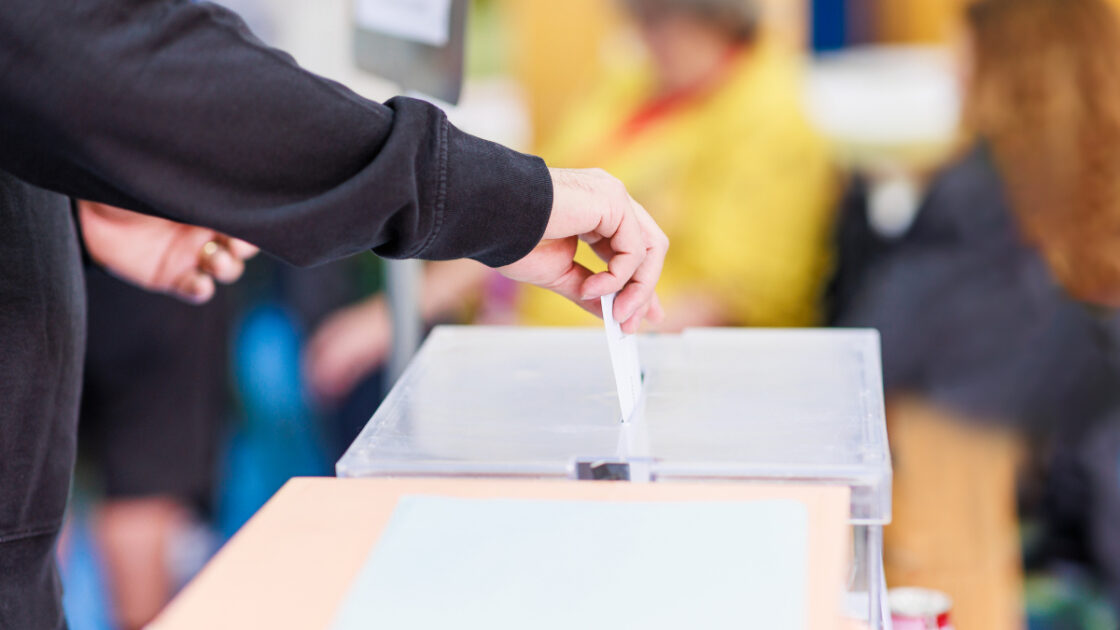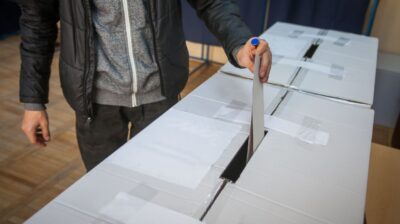How does the voting system work in Ireland?
Find out more about Ireland’s voting system, PR-STV, and what it means for your vote

If there is an election coming up in Ireland, you may want to exercise your right to vote. This might make you curious about how the Irish voting system works.
Ireland’s system for voting works differently than many others around the world, and this guide explains how.
How does the Irish voting system work?
The Republic of Ireland uses a voting system called Proportional Representation with a Single Transferable Vote (PR-STV) for its elections. This includes European Parliament elections, general elections, presidential elections, local elections and more.
In the Irish voting system, general elections, European Parliament elections and local elections are conducted across multiple constituencies, also known as electoral districts. Your constituency is the area you live in where you are registered to vote. The Irish presidential election is one set of candidates voted for in every constituency across the country.
The PR-STV system is also used in Northern Ireland to decided Assembly and local council elections.
How do I fill out my ballot paper?
Election ballot papers will have every candidate running for election in the area listed in alphabetical order. The candidate’s name, a photo of them and whatever political party they are running on behalf of will be on the ballot. If the candidate is not running for a particular party, they can be listed as ‘non-party’.
Voters can rank candidates by putting a ‘1’ next to their first preference to be elected, a ‘2’ next to their second preference, and so on.
Do not mark a ballot paper with an ‘X’ or tick the box next to the preferred candidate. Marking a ballot paper this way spoils your vote and makes it invalid, meaning it won’t be counted.
It is not required to rank every single candidate, but putting numbers next to multiple candidates is the only way that a vote can be transferred from one candidate to another in the event that it is required. A more detailed explanation of PR-STV can be found below.
What is PR-STV?
Proportional Representation with a Single Transferable Vote (PR-STV) allows voters to vote for multiple candidates, ranked by preference. A vote can be transferred from one candidate to another depending on the preferences given on a ballot paper.
In the Irish voting system, a candidate’s goal is to reach the quota. The quota is the total number of valid votes divided by the total available seats plus one. A one is then added to this number, and any remaining fraction in the calculation is disregarded.
For example, in a constituency with 25,118 valid votes and four available seats, 25,118 votes would be divided by five (four seats plus one), giving you 5,023.6. One is added to this number, giving 5,024.6, and the fraction 0.6 is disregarded, giving a quota of 5,024. If a candidate reaches the vote quota on a count, they are deemed elected.
How do vote transfers work?
Votes in the Irish voting system may be counted multiple times. There are always several distinct “Counts”. At the end of each Count, the Count Rules are reviewed and the course of action to be taken at the next Count is determined. This might be distribution of a surplus of votes belonging to a candidate, or it might be the exclusion of one or more candidates together.
For example, candidates who get enough first preference votes on the first count are automatically elected. Their extra or “surplus” votes may then be re-distributed to each voter’s next available choice. There are detailed rules for determining if a surplus should be transferred.
Votes that are transferred from one candidate to another are called transfers.
If these extra votes lead to another candidate being elected, the process is repeated until there are no extra votes to be reassigned.
How does candidate exclusion work?
In a similar way, there are detailed rules for determining when candidates should be excluded, and their votes transferred to other candidates. The candidate or candidates with the lowest numbers of votes is or are excluded.
When a candidate is excluded, all their votes are transferred to the next preference that is available on each ballot paper in the same way a surplus is. This process continues until all the available seats are filled.
Sometimes, candidates who don’t make the quota can still be elected. For example, if there are three seats in a constituency, and only two have made quota after numerous rounds of counting votes and excluding candidates, the remaining candidate with the highest number of votes would get the final seat.
An example of how PR-STV works
If all of this sounds hard to follow, don’t worry. Here’s a hypothetical example of the process in action.
Suppose we have five candidates standing for three seats. Oisín and Marie are standing for the Blue Party, Claire and Tricia are standing for the Yellow Party, and Cian is the only candidate for the Pink Party.
As it’s a three-seat constituency, the quota is the total number of valid votes (votes that aren’t spoiled) divided by four (three seats plus one), plus one. In this example, there were 1,000 valid votes, so 251 is the quota.
Here are the results of the first count:
- Oisín (Blue) – 301 votes
- Marie (Blue) – 200 votes
- Cian (Pink) – 200 votes
- Claire (Yellow) – 200 votes
- Tricia (Yellow) – 99 votes
- Total Votes – 1,000
Oisín has exceeded the quota by 50 votes and is deemed to be elected. 50 of his votes are taken as his ‘surplus’ and are re-distributed.
In order to determine how many surplus votes each candidate gets, all 301 of Oisín’s votes are checked to see who got second preference. Most of Oisín’s votes show a preference for another candidate but 61 do not and are “non-transferable”. Therefore, 301-61=240 are “transferable”.
A number called the ‘transfer factor’ is now calculated, which is the surplus divided by the transferable votes: 50/240=0.20833.
A total of 178 voters showed Marie as the next preference, so she gets 178 x 0.20833 = 37 votes from Oisín.
A total of 62 voters show Cian as the next preference, so he gets 62 x 0.20833 = 13 votes from Oisín.
So, a total of 37 + 13 = 50 votes are transferred from Oisín to other candidates. These are only Transferable votes. Oisín is left with his quota of 251 votes. Claire and Tricia got no votes from Oisín.
Here are the results of the second count, which was the distribution of Oisín’s surplus:
- Oisín (Blue) – 251 votes (ELECTED)
- Marie (Blue) – 237 votes
- Cian (Pink) – 213 votes
- Claire (Yellow) – 200 votes
- Tricia (Yellow) – 99 votes
- Total votes – 1,000
As you can see, no candidate has the 251 votes they need to join Oisín and be elected.
The thirid count will be the exclusion of Tricia of the Yellow Party. So, all her votes will be distributed among the other remaining candidates: Marie, Cian and Claire. Oisín is already elected and so will receive no further votes.
Here are the results of the third count, which was the distribution of all of Tricia’s votes:
51 votes transfer to Claire;
35 votes transfer to Cian;
10 votes transfer to Marie, and 3 votes were non-transferable.
- Oisín (Blue) – 251 votes (ELECTED)
- Claire (Yellow) – 251 votes (ELECTED)
- Cian (Pink) – 248 votes
- Marie (Blue) – 247 votes
- Tricia (Yellow) – 0 votes (EXCLUDED)
- Non-transferable – 3
- Total votes: 1,000
This is the final result.
As we can see, Claire now has just the right amount of votes to be elected. There is no surplus to distribute, and two candidates remaining with one seat to fill, so the highest remaining candidate, Cian of the Pink Party is deemed to be elected without having reached the quota, and therefore all seats are now filled, and the election is finished.
Need more information, advice or guidance?
We offer information, advice and guidance about the issues that matter to you. Our online Youth Information Chat service is for 16 to 25 year olds and is available Monday to Friday, 4pm to 8pm (excluding Bank Holidays).






